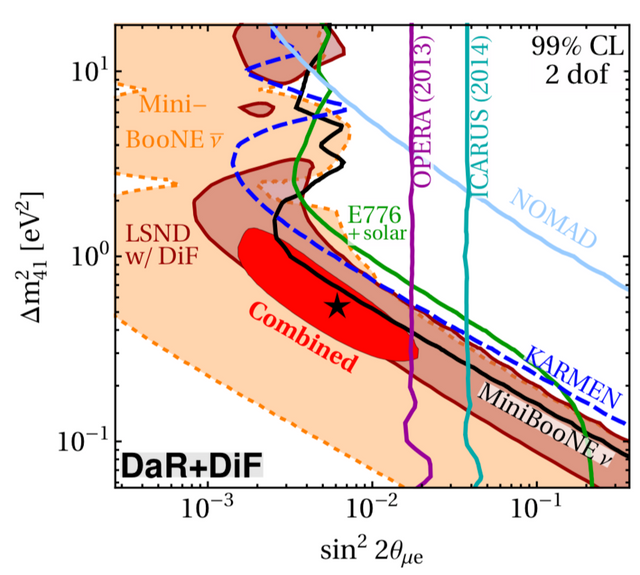You are viewing a single comment's thread from:
RE: Sterile neutrinos as a path to dark matter
What would produce these sterile neutrinos? Remnants of the big bang, stars, black holes? If it is indeed dark matter and there is a lot of this in the universe, what are the theories for its formation? Can you explain a little bit about the neutrino oscillations? I'm also super confused by this figure

Are you saying the y axis is the difference in Mass and the x axis is the angle that they are being detected?
Also, I found this link that I think relates to the oscillations of neutrinos. I remember learning about eigenvalues and eigenvectors in college, but I suppose I never fully understood them
https://phys.org/news/2019-09-theorists-rosetta-stone-neutrino-physics.html
Whilst they are sterile and thus non interacting with anything, sterile neutrinos nevertheless mix a little with all other neutrinos. Since all other neutrinos are sensitive to the weak force, sterile neutrinos have hence a reduced sensitivity to the weak force through this mixing. This sensitivity is however super-suppressed because of the small size of the mixing.
Some sterile neutrinos could have been produced in the early universe, but also later on during the course of the universe history, through oscillations of non-sterile neutrinos.
Those oscillations means that when a neutrino propagates, there is a given probability that if it is of type A (A can be any type of neutrino), it will be detected as a neutrino of class B (again, B can be any type of neutrino). Emphasising with an explicit example: an electronic neutrino produced in a star could reach Earth as a muon, tau or even a sterile neutrino (assuming sterile neutrinos exist). Is that clearer?
Concerning the image, it shows the relations between the mixing pattern of the sterile neutrino with the electron and muon neutrinos (x-axis) and the mass difference between the sterile neutrino and the others (the y-axis). The coloured areas are the regions favoured by the anomalies, the red area being the most favoured one. The vertical lines (OPERA and ICARUS) are constraints: everything on their right is excluded. The other lines represent constraints from the non observation of anything by other experiments: everything on top is excluded. I hope this clarifies the whole story. Otherwise, feel free to come back to me!
If neutrinos have antimatter versions, would that mean there could be an antidark matter sterile neutrino?
This is a good (open) question and I can't answer it. Actually, no one can. Physicists are still investigating whether neutrinos are their own antiparticle (i.e. are neutrinos and antineutrinos the same object)? Hopefully, we will know more soon...
Concerning the studied dark matter models, in some of them the dark matter is its own antiparticle (anti dark matter equals dark matter) and in some other not. Both are very viable according to current data.
That makes it much more clear for me. Thank you for the detailed response
You are very welcome! :)